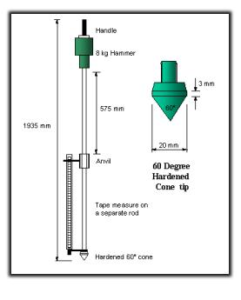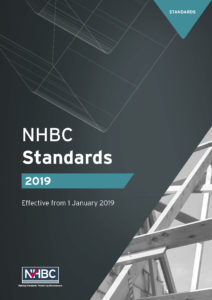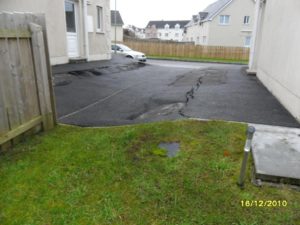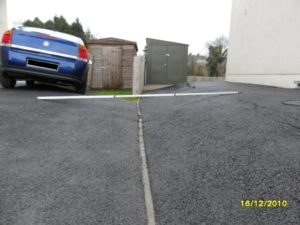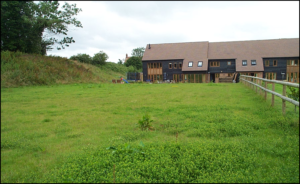Applying mindfulness to the workplace has benefits in terms of stress management, improved health and greater focus.
Mindfulness and mental health
Mindfulness is recommended as a treatment for people with mental ill-health as well as those who want to improve their mental health and wellbeing.
There are also different sorts of mindfulness meditation which can help people in different ways. Evidence shows compelling support for Mindfulness Based Stress Reduction (MBSR), which helps people to cope with stress, and for Mindfulness Based Cognitive Therapy (MBCT), which is designed to help people with recurring depression. They provide a flexible set of skills to manage mental health and support wellbeing.
The evidence for mindfulness
Mindfulness meditation has been shown to affect how the brain works and even its structure. People undertaking mindfulness training have shown increased activity in the area of the brain associated with positive emotion – the pre-frontal cortex – which is generally less active in people who are depressed.2
Many studies have shown changes in brain wave activity during meditation and researchers have found that areas of the brain linked to emotional regulation are larger in people who have meditated regularly for five years or more.3 The evidence for different types of mindfulness is promising and research has grown in recent years. Source: Mentalhealth.org.uk
What is mindfulness?
Being aware of what is going on inside and outside of yourself, moment by moment.
We frequently live internally, forgetting about the world around us and how our bodies respond to it. We often get wrapped up in our own thoughts, and are unaware of how our thoughts and emotions reflect on our physical body.
Mindfulness puts each of your senses into practice – smells, sounds, sights, tastes, and focuses these senses on the present moment and surroundings.
Mindfulness brings the present moment to the forefront, enabling you to positively change your perception, thoughts and feelings about yourself and your life.
What are the benefits?
Mindfulness enables you to enjoy both yourself and your surroundings. By being more aware of the present moment and the impact this has on you, you can establish a positive thought pattern.
Focusing on your internal dialogue will help you to understand a pattern of thought, enabling you to gradually train yourself to recognise when these become unhelpful and destructive.
Mindfulness gives you the opportunity to step back from your thought pattern and recognise that it doesn’t control you and can be altered in whichever way you wish.
This recognition will enable you to highlight signs of anxiety and stress perhaps before you normally would. Determining these signs more promptly will help you to combat them in their earlier stages.
In short, mindfulness could help you:
• Become more self-aware
• Reduce stress and anxiety
• Feel more in control of your thoughts and feelings
• Establish stronger coping strategies towards unhelpful thoughts and feelings
• To be kinder to yourself
How to practice mindfulness
Become more aware of each of your senses in order to switch off the ‘auto pilot’ thought processes. Pay attention to your thoughts, feelings, body and how you react to the world around you.
Notice the everyday – The sound of your feet hitting the pavement, the feel of your hands on your knife and fork or the shapes of the clouds. Paying attention to the things you encounter everyday will bring a new and brighter perspective on life.
Keep it habitual – Dedicate a certain time to being mindful. Try to keep this uniform each day as becoming mindful takes practice. This could be a bath before bed, or a walk to work for example.
Try something new – We are all creatures of habit, so stepping out from the norm can help to establish a new and fresh perspective. This can be something simple like sitting on a different seat on your commute to work, or running a different route for your jog.
Recognise your thoughts – Some people have a very busy and vocal inner dialogue. This can become intrusive and often go unnoticed. But paying attention to it will enable you to make positive changes. Mindfulness isn’t about quashing your usual thought pattern, but instead questioning it. Are those thoughts useful? Are they causing you harm? Embrace your thoughts, acknowledge them, and try to release them as easily as they arrived. Exercise can often help to quiet a worried and busy mind.
Free yourself from the past and future – The beauty of mindfulness is that it can be practiced anywhere. It can be helpful to acknowledge that you may have been confined by past problems, or occupied by future worries.
Mindfulness Techniques
We have discussed that mindfulness can be practiced within normal daily life, but it can also be helpful to dedicate some time to establish more formal mindful practice in the form of mindful meditation.
The word “meditation” is something you could think of as a big umbrella word. Rather like “sport” it covers a whole host of different styles, activities and methods.
It is something which anyone can do and enjoy when you find a method which suits you.
Things you need, to gain the most benefit from meditation and mindfulness:
1. Focus
2. Relaxation
3. Self-acceptance and patience
1. Focus
• Keep your mind engaged in your meditation
• As soon as you are aware of wandering thoughts bring yourself back to focus
• When a thought crosses your mind in meditation, acknowledge it but don’t start a conversation with it! Let it go now and allow it to come back later or file the thought away for later action
• Allow yourself to just say “I don’t know!” if you start to question yourself
• Tighten and relax each muscle group from top to bottom
• Focus on what you see, hear, smell, taste and feel moment by moment
• Return to focus
2. Relaxation
• Allow yourself to be relaxed when you start to meditate
• Allow the meditation to enhance those feelings
• Close your eyes and place your hands flat on your solar plexus
• Calm on each outbreath
• Imagine breathing in relaxing coloured air – you can also breath out unwanted feelings with a relevant colour to you.
Ask yourself –
• Am I physically comfortable?
• If using music – is the volume right for me?
Also check you are mentally comfortable –
• Do I feel safe?
• Am I comfortable that I won’t be disturbed?
• Have I allowed time? (Set an alarm!)
3. Acceptance and Patience
• Don’t worry about whether you are doing it the “right” way. The way you are doing it is right for you right now!
• Do not try too hard
• Accept that thoughts will enter your mind and distractions will occur and simply return to the meditation each time your mind wanders without giving yourself a hard time
• Practice will make it easier and more effective – the more you do it the better you get
• Return to focus
Helpful Meditation Techniques
Guided Visualisation
• Start by relaxing your body
• Engage all your senses and imagine: sights, sounds, smells, temperature and touch
• Guide yourself through an imaginary journey to a place where you can relax and enjoy feeling safe and calm
Laugh your troubles away
• Make a little cave in your hands
• Put your troubles inside
• Take a peek and laugh them away
Seated meditation
• Be awake, conscious, engaged, calm and relaxed
• Sit upright and be comfortable
• Use your chosen hand position
Breath counting meditation
• Close your eyes and allow yourself to relax
• Start to focus on your breath, then begin to count the out breaths
• If you lose count because you have become distracted, start again
• Do this to start with for up to 50 natural breaths then build it up as you like
When you have practiced you will get a feel for what you enjoy and what works for you, so you can create your own style of meditation.
To provide Mindfulness in your workplace and for further information contact The Healthy Employee Ltd
E: office@thehealthyemployee.co.uk
T: 07778 218009


